I have a confession to make. Almost 20 years ago, I had the opportunity to add free native plants to my garden. My generous friend had let her front lawn grow out and dotted native plants within it to create a meadow. Some of her neighbours were horrified and very vocal in their condemnation. I passed on her offer, convinced that native plants were unruly, unfashionable, and sure to cause trouble. How wrong I was; I could have been enjoying butterflies, bees, and birds in our yard all along.
Time for a change
Eventually, when I came around, and planted a mostly native pollinator garden in our front yard, I left an area of grass — just in case. I wasn’t sure how my neighbours would react, so I thought I’d better leave a buffer of tidy lawn between the garden and the sidewalk. That small patch of remaining grass was a nuisance to mow, especially since the weeds that grew in it were tough to cut with our manual push mower. Since it is so sunny, hot and dry here, the turf lawn has never grown very well.
Every few weeks when mowing loomed, I asked myself: “Why not turn the last of the front lawn into more pollinator garden?” I’ve seen enough photos of New York’s High Line garden to know that native plantings can be both beautiful and socially acceptable — even adored — if they’re done right.

Middle ground
Every summer, there are news stories about urban gardeners who run into trouble with neighbours and bylaw officers because their front gardens are considered too tall or wild-looking. Regulations need to change so residents can turn their lawns into eco-friendly plantings that will increase urban pollinator and bird habitat. If you’re new to this idea, consider looking up books like Nature’s Best Hope by Douglas Tallamy and The Pollinator Victory Garden by Kim Eierman to learn why it’s so important.
Even in cities where front-yard gardens are permitted instead of lawns, most people still have traditional ideas of what those gardens should look like. We’ve got to find a middle ground between full-on wild plantings and out-dated, manicured yards in order to make habitat gardens more acceptable and widely planted. I was determined to find that middle ground in my new pollinator garden extension next to the sidewalk.


Keep it short
First of all, I needed to keep the new garden short, so I chose plants that are about 2 1/2 feet tall or less. Since the garden is on a corner, I can’t obstruct the view for traffic or pedestrians. I also think that shorter plants will help make the pollinator planting look tidy and under control.
While I’m using many native plants, I chose shorter varieties of each kind. For example, goldenrods are important pollen and nectar sources for late summer and fall. Instead of choosing Canada Goldenrod — which is tall and typically considered a weed that causes allergies — I’m using Silverrod and Old Field Goldenrod. (It is actually a myth that goldenrod causes allergies. It had large, sticky pollen that doesn’t easily fly in the air. Ragweed is actually the culprit, which has fine, dusty pollen because it is wind pollinated.) Old Field Goldenrod has a tighter plume of flowers than Canada Goldenrod, and is only about 2 feet tall. Silverrod doesn’t even look like goldenrod because its flowers grow on slender spikes and are creamy white instead of the familiar bright yellow.
To accompany these goldenrods, I planted Aromatic Asters instead of taller, more common varieties like New England Aster and Smooth Aster. Again, this aster is only a few feet tall and is a very showy bloomer. It is a prairie native, not a local plant.

This bumblebee knows that Silverrod is a tasty goldenrod, even if it doesn’t look like it. (September 7, 2020) 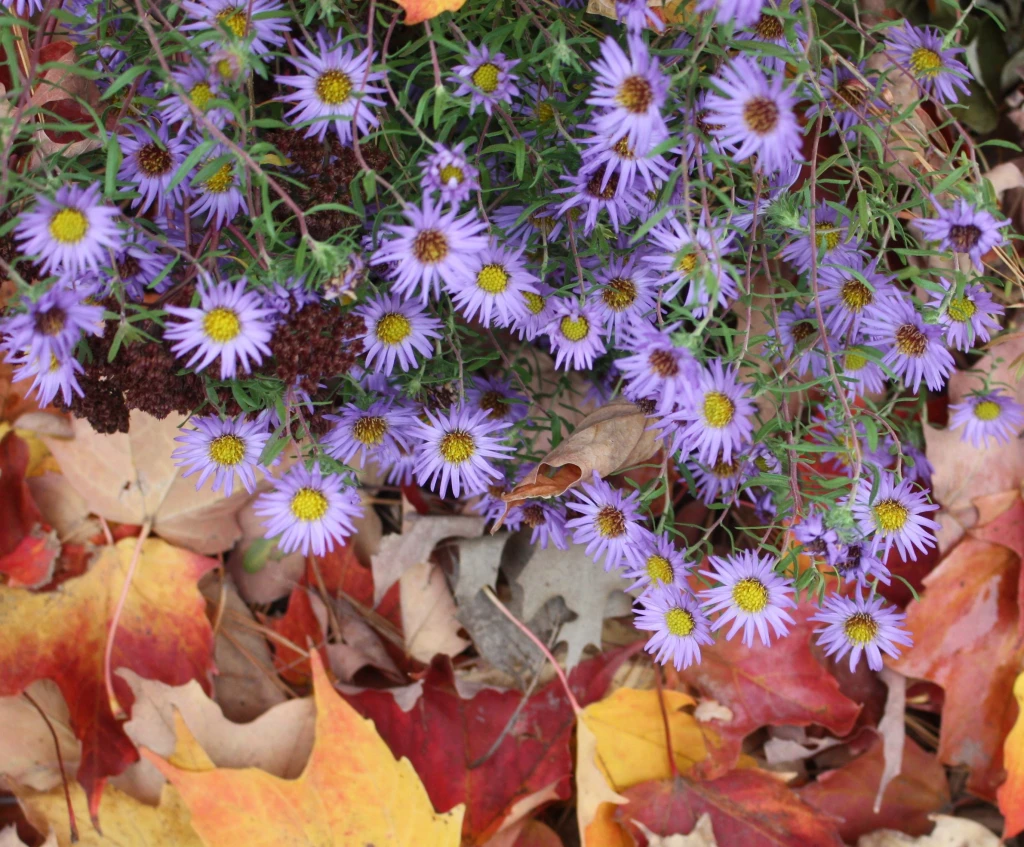
My Aromatic Asters are still blooming in October after the Maple leaves carpeted the ground. (October 18, 2020)
One chunk at a time
I have a long history of underestimating how much time or work garden projects will involve. Wisely, I decided to plant this new garden in sections over several years to spread out the work. I began with foot-long strips, and finished the last oddly-shaped sections in the summer of 2020.
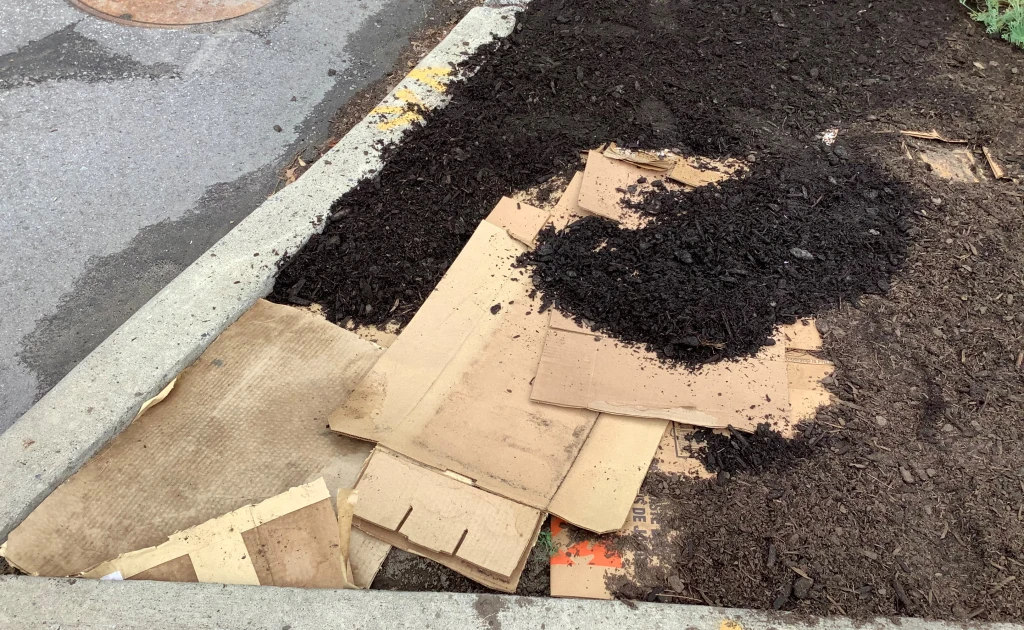
Planting over a few years also gave me time to grow most of the flowers myself. This space is city property and could be dug up or repurposed in the future; I didn’t want to risk wasting money buying pricey plants that may end up destroyed during road construction. I also needed a lot of plants to fill this new area, so growing them myself was my only feasible option.
I bought seeds from my usual sources: Beaux Arbres Native Plants, Botanically Inclined, and Wildflower Farm. I also ordered a few from Prairie Moon Nursery in the States. The Prairie Moon Nursery web site has a helpful search feature that allowed me to find options based on plant height, bloom colour, as well as sun and soil conditions.
Blending in
I wanted this new garden to work with the existing plantings, so I stuck with the same colour scheme: yellow, orange, red, white, and ‘blue’. (Most so-called blue flowers are actually bluish-purple.) I planted repeating, odd-shaped clusters of 3 to 5 flowers, and filling in around them with a pretty, airy bunchgrass called Prairie Dropseed. I made a list of flower options by colour and bloom time to guide my final decisions.
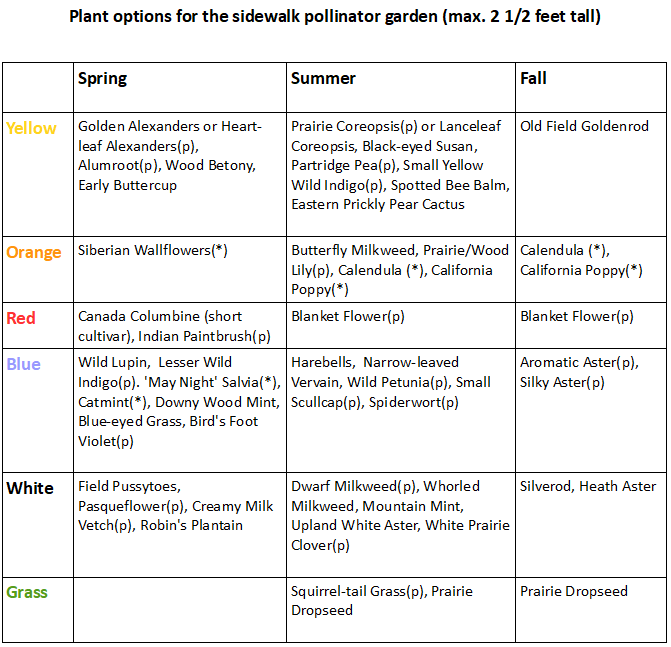
To repeat the orange colour of Butterfly Milkweed, I included annual Calendula and California Poppies. A visitor has since warned me that California Poppies may self-seed wantonly, so I will remove them just in case they turn out to be invasive. I rarely see pollinators on the California Poppies anyway, despite the fact that they’re a common addition in pollinator meadow mixes.
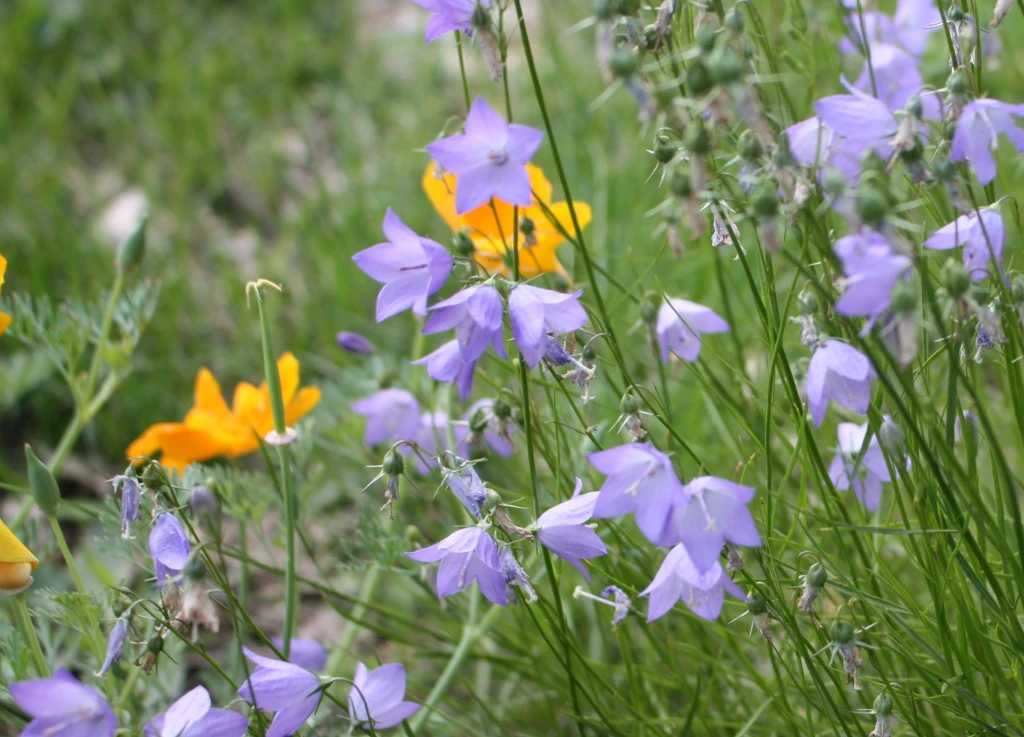
‘Blue’ Harebells with ornage California Poppies. (June 30, 2020) 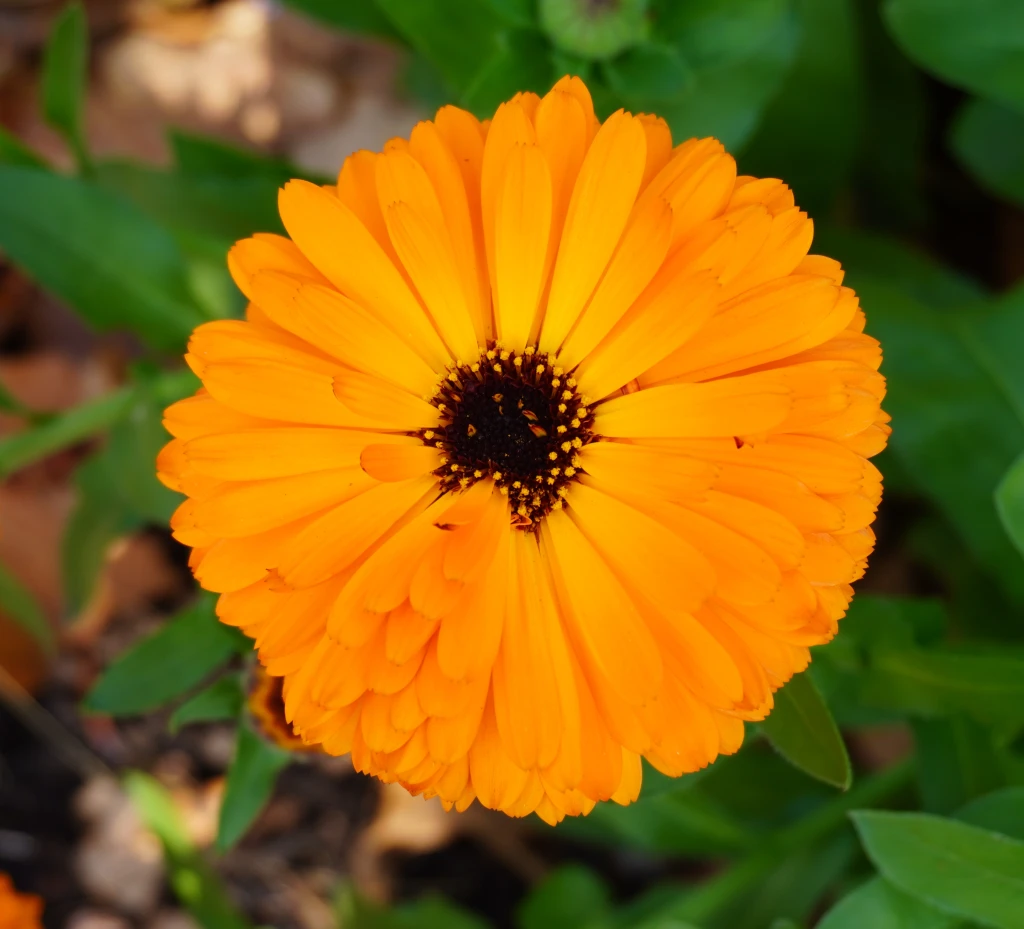
Cheerful orange Calendula. (October 23, 2020)
Purple power
Since Monarchs like purple blazing star (Liatris) flowers so much, I decided to include purple flowers in the sidewalk garden in 2020. I grew several blazing star varieties to try: Meadow Blazing Star (will be too tall), Rough Blazing Star, and Cylindrical Blazing Star. I also added Purple Prairie Clover because bees love its orange pollen a lot. Pale purple Hairy Beardtongue and Nodding Onion are some other flowers I added this year.


A bumblebee visiting Hairy Beardtongue flowers. (June 11, 2020) 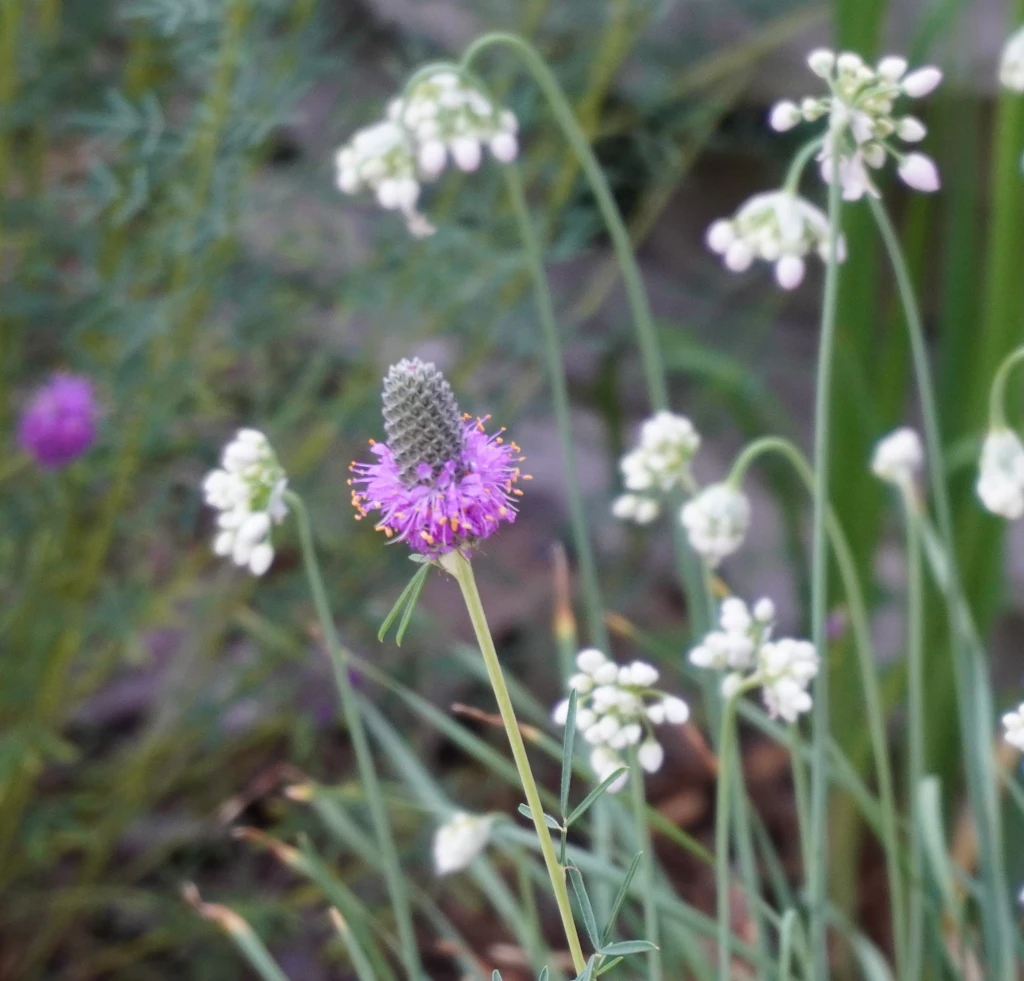
A Purple Prairie Clover spike with Nodding Onions in the background. (July 9, 2020)

Tidy edges
To make sure that my garden looks neat and well-tended, I pay particular attention to the edges and path. In the spring, I remove leaves from the edges and apply composted pine mulch. I then keep the interior of the garden more natural, such as leaving the leaves.
I’m also experimenting with a low hedge of Kalm’s St. John’s Wort on one side of the path. Its sunny flowers are an important source of pollen for bumblebees, and it has cute little leaves. I bought a few shrubs and grew many more from seed. I plan to keep it clipped like a boxwood edging; this formal element will counter the naturalistic look of the rest of the planting.
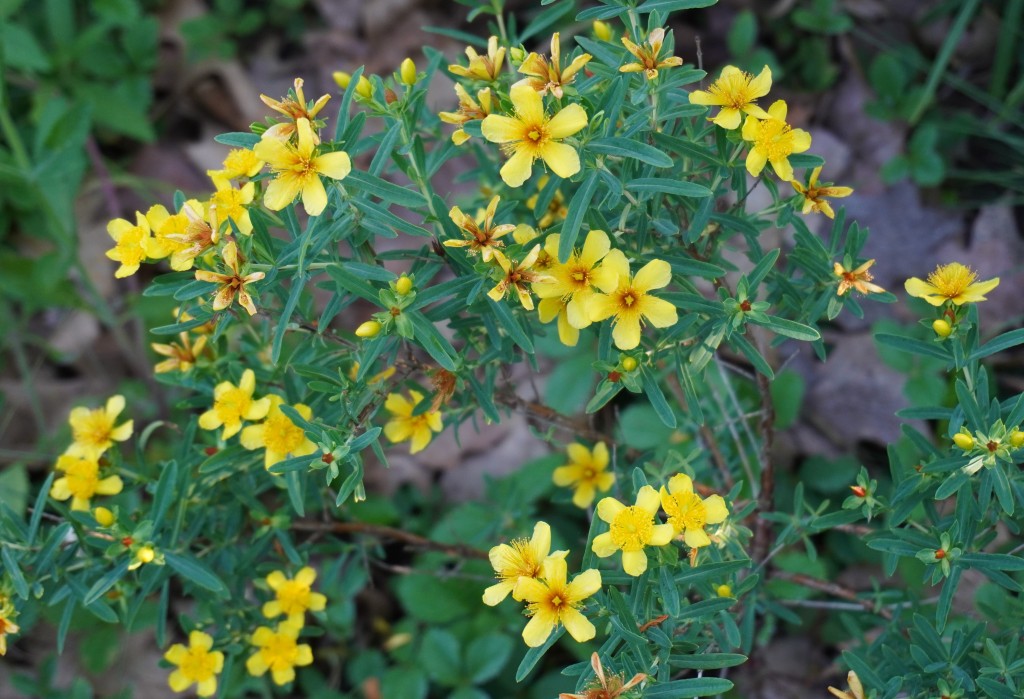
As the planting gets closer to the sidewalk, I am reducing the flowers and increasing the proportion of Prairie Dropseed. Since some passers-by are afraid of being stung by bees, I want to keep the bees away from the sidewalk. (I have never been stung by a bee in the garden. They’re too busy eating to bother with me.) If people want to take a closer look at the flowers and pollinators, they can walk through the garden along the mulch path.
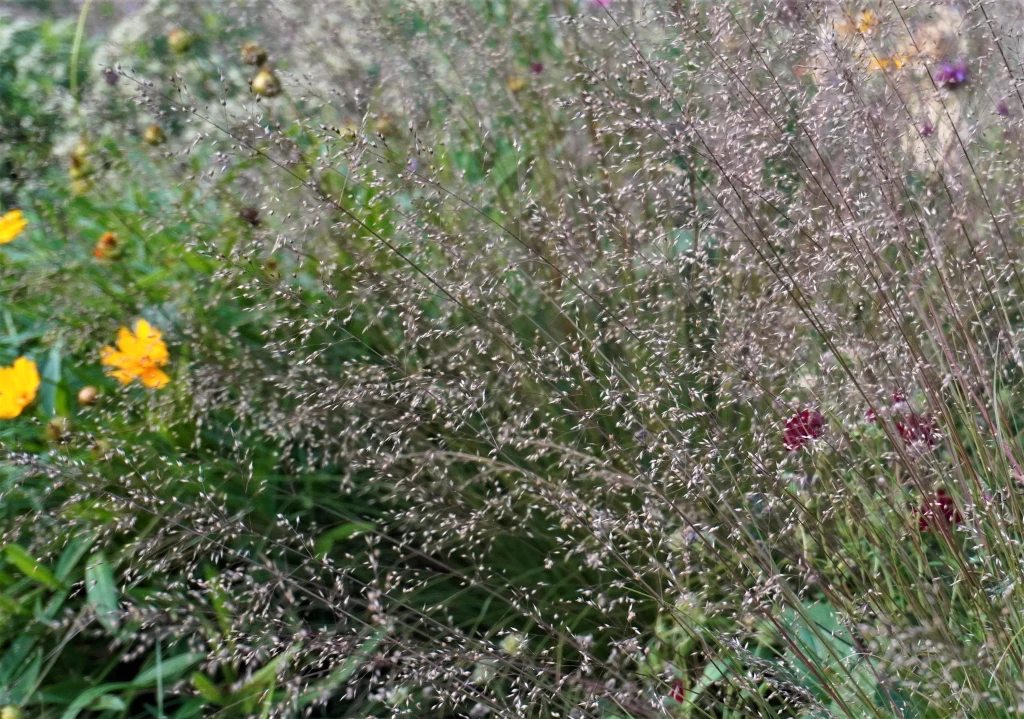
Right along the sidewalk, I applied mulch along the edge and planted Field Pussytoes as a low ground-cover. Since I didn’t have enough Field Pussytoes, I also moved a few chunks of ground-hugging ‘Dragon’s Blood’ sedum. I will have to cut off its flowers next to the sidewalk to keep bees away from the edge
.
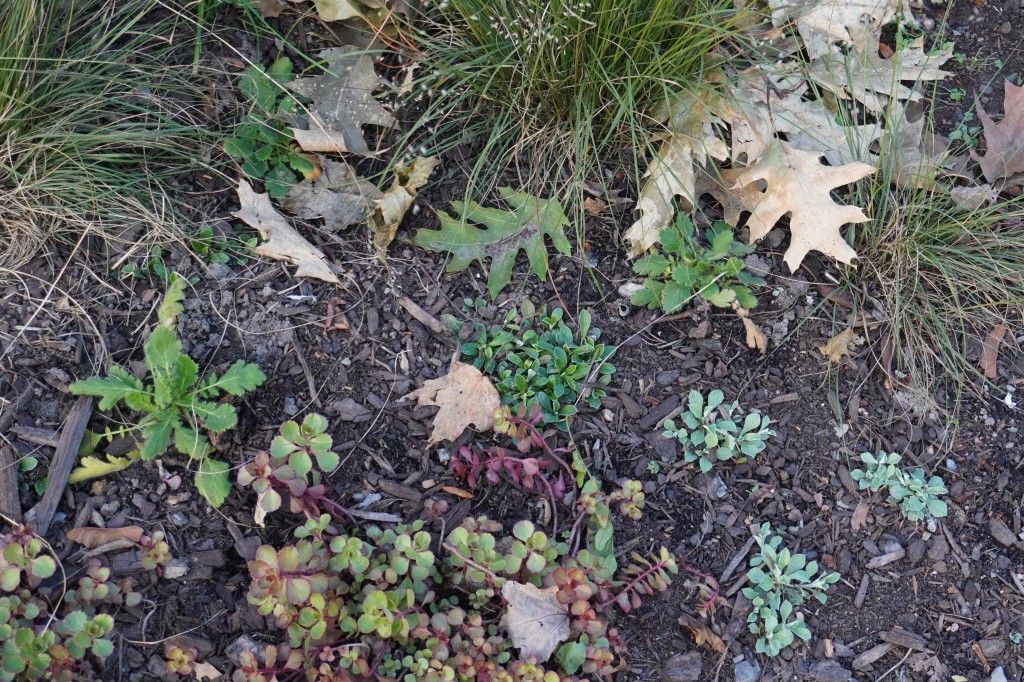
Field Pussytoes (grey plants on the right), ‘Dragon’s Blood’ Sedum, Prairie Smoke, and Prairie Dropseed grass near the sidewalk. (September 14, 2020) 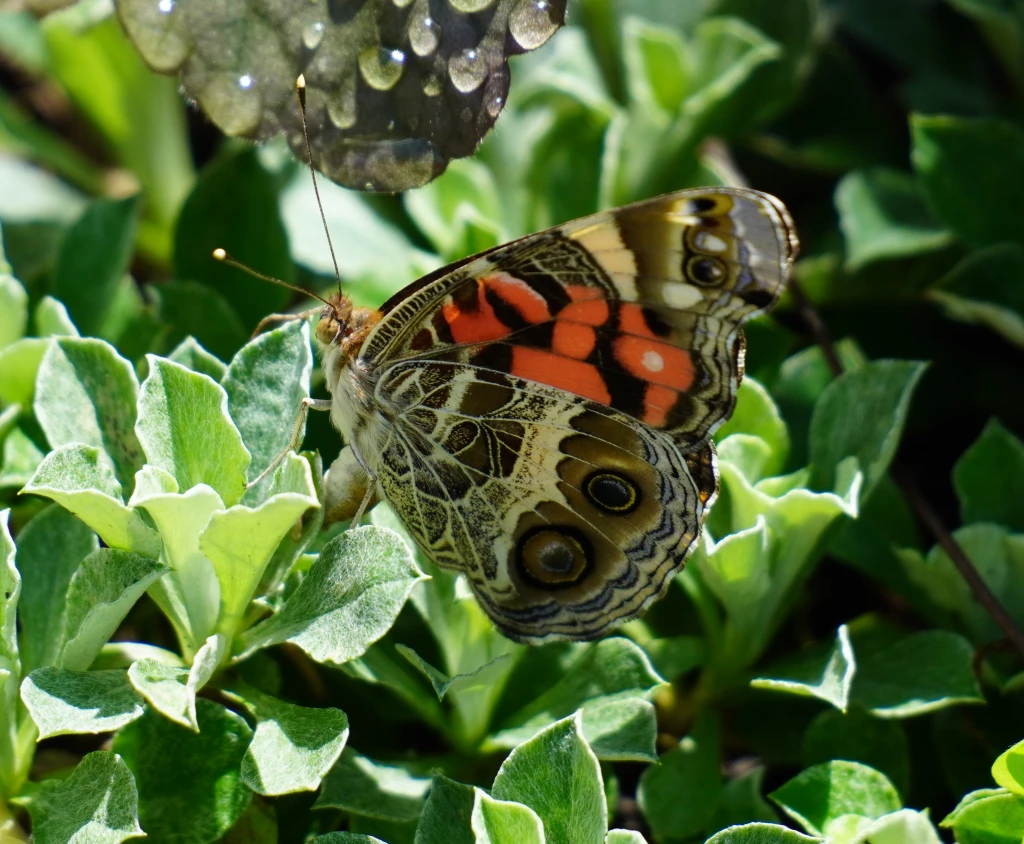
An American Lady Butterfly laying eggs on Field Pussytoes. (July 11, 2020)
I’m looking forward to how the new garden will look this year, now that it’s fully planted. Some plants will probably need to be added, removed or moved, but I’ve got a good start. I think I found a successful compromise between a totally naturalistic habitat garden, and more familiar traditional garden styles. Perhaps a few folks passing by will like it enough to try turning a patch of their unused lawn into a new pollinator garden.
Saw the article in National Wildlife today. I had a fabulous acreage and many many native plants but moved into the city to a corner lot.
You have given me a great idea how to relandscape this BORING yard!
Thanks so much.
Gardening in northern Colorado.
LikeLike